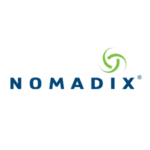
Over the past decade, the hotel industry has experienced dramatic changes, particularly in the area of hotel channel distribution. Big brands, online travel agencies (OTAs), global distribution systems (GDS’s), and metasearch websites are all vying for customer attention, and it’s all affecting hotel margins.
In order for hotels to navigate this shifting distribution paradigm and optimize their channel mix, they must take an in-depth look at the costs and benefits of their channels: direct, indirect, online, and offline. By analyzing these channels, hotels can develop a holistic strategy that creates revenue and profit streams that are sustainable going forward.
It starts with the right data
As channels become more nuanced and complex, access to accurate data plays a pivotal role in developing a successful hotel distribution strategy. A key objective is not to simply capture more data, but to use key data and performance metrics to gain valuable insights beyond simple demographics and basic guest segmentation. Core data sets for channel optimization include economic and competitive markets, and customer-centric information such as regional diversity, website navigation paths, guest profiles, visitor tracking statistics, and stay history.
In order to optimize channels for profitability, you must not only understand the “who, what, where, and when” of your customers, but most importantly, the “why” – the behavioral data, that highlights the factors that guide your guests’ travel decisions. This level of customer segmentation granularity, when analyzed in conjunction with multidevice touchpoints and conversion statistics, offers relevant insights for an effective distribution strategy.
Guest channel preferences are also crucial in developing an optimal channel mix. For example, understanding that 52 percent of millennial travelers prefer to make a hotel booking through a general travel site versus your proprietary website is highly relevant information to have at your fingertips when trying to reach that younger demographic.
Consider all channel costs
According to Morgan Stanley Research, in 2015, OTAs collected $16 billion in commissions, and GDSs earned high revenues as well, handling approximately 62 million bookings that same year. Whether it’s commissions, fees, or negotiated rates, every distribution channel carries costs ranging anywhere from 10 to 50 percent of revenue.
Historically, hotel owners haven’t consistently factored distribution costs into their channel decisions. As a result, hotels focused on cash flow may unwittingly price rooms below marginal and fixed costs, leading to a negative impact on their pricing structure and profit. To achieve true profitability, hotels should use net revenue per available room (Net RevPAR) or gross operating profit per available room (GOPPAR) versus standard RevPAR, comparing all distribution channel costs, including marketing and customer acquisition expenses, and applying them against the revenue they deliver.
And when evaluating channel costs, it’s important to calculate expenses associated with direct bookings as well. These may include website development and content, loyalty program management, and direct marketing campaigns as well as call center expenses. Further, whenever a hotel uses discounts or packages with add-ons to generate business, these expenses need to be included in the channel cost analysis as well.
Maximize channel profitability
In addition to examining channel costs, it’s equally crucial to evaluate the full contribution from each channel. While there are definitely benefits to including direct channels in your distribution mix, a closer look reveals that direct bookings may not be quite as “head and tails above the rest” in terms of profitability as once thought. A recent study by Infrata showed that if a hotel shifted its entire inventory away from OTA channels to brand.com, there would be no significant impact on the net contribution to hotels. The results of this study along with the customer acquisition benefits of third-party channels, make it clear that to maximize profits, a hotel should focus on more than simply growing its direct bookings.
Channels that deliver guests with higher ancillary spend and customer retention rates (i.e. repeat visitors) should also be factored into the profitability equation when determining channel priorities. These guests have a higher lifetime value. And because there are no customer acquisition costs for repeat visitors, those costs are replaced with profits on subsequent stays.
Obtain peak performance
For more than three decades, technological innovations have reshaped guest decision-making and the channel distribution landscape right along with it. Guests now have an unprecedented number of options for shopping and booking their hotel rooms. To obtain peak performance in your channel mix, it’s not all about direct bookings or an equal mix across all channels. Rather, hoteliers must strategically increase or decrease their presence on high-margin and low-margin channels in ways that improve overall revenues and profitability.
Phocuswright research indicates that there’s an inverse relationship between direct and OTA bookings. As direct bookings decrease, OTA bookings increase by the exact same percentage. Rather than looking at this as an excuse to gear up for battle in the booking wars, consider optimizing your channel mix by partnering with OTAs instead – GDSs and metasearch websites as well – use them as tactical tools in your “distribution channel” toolkit.
This only makes sense, considering that 27 percent of all U.S. hotel bookings came through indirect channels in 2016, up from 23 percent two years earlier. And forecasters are predicting this upward trend will continue, with OTAs expected to reach 41 percent market share by 2020.
The fact is, many shoppers are accustomed to the convenience of searching through lists of hotels via third-party channels, and many are loyal to specific OTAs and metasearch websites.
When considering channel mix, hoteliers should carefully evaluate the cost and probability of trying to change established customer preferences for their favorite third-party channels. Seeking to transition traffic to direct channels may ultimately undermine ROI.
While strategic use of indirect channels is important for a hotel’s success, direct bookings continue to have their place in a healthy channel mix. After all, 52 percent of OTA visitors click on hotel websites, so making certain your direct channel is converting well is a priority. Unlock greater potential in your direct channel through mobile optimization. Google revealed that mobile searches overtook those occurring on desktops back in 2015, and there’s been explosive growth in mobile adoption and conversion ever since. In the near future, new technologies like voice- and map-activated applications will become popular substitutes for traditional browser searches.
In the offline arena, be sure to optimize your hotel’s voice channel. Voice still brings billions of dollars in revenue to the hotel industry each year – and it’s often overlooked. Voice delivers highly qualified leads with high conversion rates, particularly because prospective guests can be re-contacted for future business.
Maintain continuous improvement
Hotel rooms are for sale in a dynamic distribution landscape. One where channels are transforming into hybrid marketplaces, consumers exhibit cross-channel behavior, and new market-savvy players such as Google, Apple, and Facebook are entering the playing field.
Hoteliers seeking to optimize their distribution mix must examine the costs, profitability, and performance of each channel, with regard to business goals and customer segments. Some channels may perform better on certain days of the week or during particular seasons or market conditions. To create and maintain an optimal channel mix, hotel revenue managers need to remain vigilant, conducting regular audits of every channel. They must increase and decrease inventory allocated for each channel to ensure each one continues to bring in an optimal ROI and is functioning at its peak within the hotel’s distribution ecosystem.



















